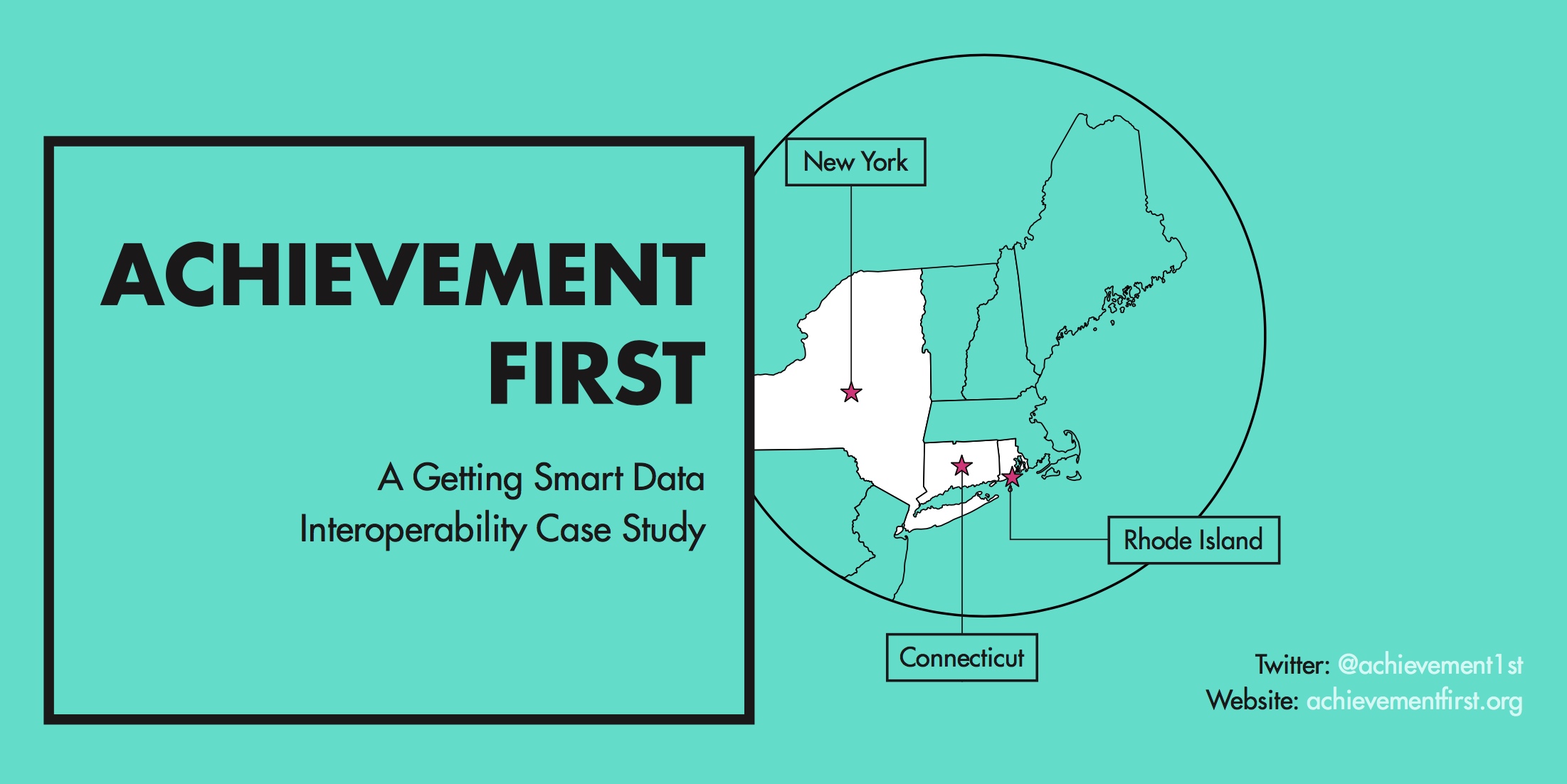Achievement First operates a network of 32 high-performing college-preparatory, K-12 public charter schools in Connecticut, Rhode Island and New York City. In keeping with its name, the network is centered on a goal of outstanding student achievement. Its rigorous standards, high-quality curriculum and ongoing professional development for teachers serve to support this goal. Teachers regularly analyze student data to drive daily instruction and long-term planning, and an emphasis is placed on building strong relationships with students, parents and guardians.

Since the opening of its initial school, Amistad Academy, in 1999, the network has grown to three states, opening elementary, middle and high schools centered on its “REACH” core values: Respect, Enthusiasm, Achievement, Citizenship and Hard Work. Students are admitted on a lottery basis, with an average of 10 applications received for each seat.
Baked-In Innovation
Schools are staffed with operations, logistics and technology teams that enable teaching and learning staff to focus on curriculum development and delivery, assessment, and professional learning. Three years ago, the network launched Greenfield, a new school model that emphasizes self-motivated learning with greater access to technology, smaller group instruction, and a variety of enrichment activities. (By the 2017–18 academic year, three network schools will follow this model.)
Archana Parab, Database Architect, leads a “small and mighty” team of developers and database staff who build and refine data connections and design solutions to meet the entire network’s technical needs. She explained that Achievement First employs a variety of assessment platforms: Illuminate is in place for benchmark assessments, while STAR assessments, along with a whole host of other digital reading platforms, are used for reading. The network also piloted and uses Cortex, a next-generation learning platform developed by InnovateEDU.
“Our team believes very strongly in being able to build and maintain your own tools—and it has created a massive competitive advantage for us, as that kind of internal capability is still unusual among charter schools.”
Nowhere is this more evident than in the network’s Greenfield program, which demonstrates how schools can be built from scratch. For example, through Illuminate, Greenfield teachers are disseminating weekly quizzes, which offer a variety of benchmark assessments. Lisa Minott, Senior Director of Greenfield Technology, noted that it enables her team “to intervene before an issue becomes a crisis, and we can also subdivide into a week-by-week basis, focusing on two to three items for mastery.” Those assessments feed into Cortex. This interoperability between systems means that interventions are structured and meaningful, and address key gap areas while giving teachers actionable data.
“You take something huge like moving a kid across a couple of grade levels in a year, and turn that into a feasible accomplishment,” Nevico added.
Technology Supports the Personalized Learning Model
While Achievement First’s existing assessment tools currently do not adapt to students’ responses in real time, they offer varied assessments in which each student can move at his or her own pace.
“We do a lot of reporting for various blocks throughout the day: science, humanities, math, etc.—and from that we gather a suite of reports on a specific trend line,” Minott said. “This enables us to set rigorous yet appropriate goals for every student in terms of proficiency.” The ability to pull data together in an interoperable way means that this trend line deeply informs the core work of the team.
While overall student growth is charted by analytics obtained from weekly assessments, teachers in the Greenfield model also rely upon the Cortex platform to drive personalized learning.
“With our 1:1 model, all Greenfield students have access to a Chromebook, and specific times when they’re learning science, English, and other topics,” Minott explained. “They log into Cortex, where we’ve laid out core content and several ‘go deeper’ modules, which enable fast-moving students to explore a given topic further. Each student encounters a playlist of digital content and activities—whether those involve text, multimedia or simulations—that have been curated alongside a study guide with questions and prompts. If they pass, they can move onto the other playlist.” Students see their progress in real time, driving engagement in the content and exploration of passion-driven and interest-driven deeper dives. Teachers can understand through the data, not only if a student is learning, but how.
Students’ needs are met at all ends of the spectrum. “For those reading below grade level, we can customize down to the student’s level, so that on the surface it looks the same—they’re covering the same topic as their peers—yet it’s a way to reach students with challenges where they are,” Minott said. “The module then serves as a benefit rather than a roadblock.”
Many Touchpoints, One Powerful Community
Many school leaders talk about an unwavering commitment to their students. What that means and how it can be put into practice varies widely, of course. Just what would happen if every adult staff member was committed to student success on a daily basis?
“Our Greenfield model schools are set up so that students have goal coaches and goal teams; for example, every teacher in the building is assigned somewhere between 10 and 16 students for whom they are a goal coach,” Minott said. “This means that they work with this particular cohort of kids both academically and personally. They share experiences, personal histories, and stories. It’s enabled us to build a real, tangible community around each student. They meet every day for 15 minutes.” This goal team data is able to live side-by-side with the interoperable assessment data in Cortex, allowing teachers and staff to get a holistic picture of the student’s academic performance.
The Greenfield model uses a “dream team” concept. Instead of a typical report card, students are asked to select a group of adults such as parents, grandparents, guardians, clergy members or coaches who are important role models to them. Students as young as five (kindergarten students) then present to their dream teams.
Students in the Greenfield model also receive weekly progress reports, stating their proficiencies and how far they may be from an academic target. In the network’s other schools, traditional report cards and a report card night held in the schools pull a child’s support team into the conversation. The ability to have an interoperable solution in Cortex, which captures data from disparate systems into one view, allows for more real-time weekly updates for students, teachers, parents and the goal team to assess where a student is and how far he or she has to go. This inherently shifts the dynamic from teacher-led to student-led, and leads to more informed decision making.
Constructing an Ecosystem
Whether in the network’s classic schools or in its Greenfield model, innovation continues to be rolled out at Achievement First. “This year, we launched a platform called Curriculum Hub. It’s a custom piece of software that provides daily lesson resources that create scope, sequence and scaffolding for teachers. Instead of spending time figuring out the basics (how to write a lesson and bring the content alive with certain nuances), the software allows teachers to go a lot deeper and drive mastery of content.”
The answer doesn’t lie in a single solution, Nevico said.
“There’s no secret sauce in terms of platform, reports or software; it’s about creating an interoperable ecosystem, developing the right habits and empowering teachers to accomplish lofty goals.”
Read the full Achievement First case study here.


